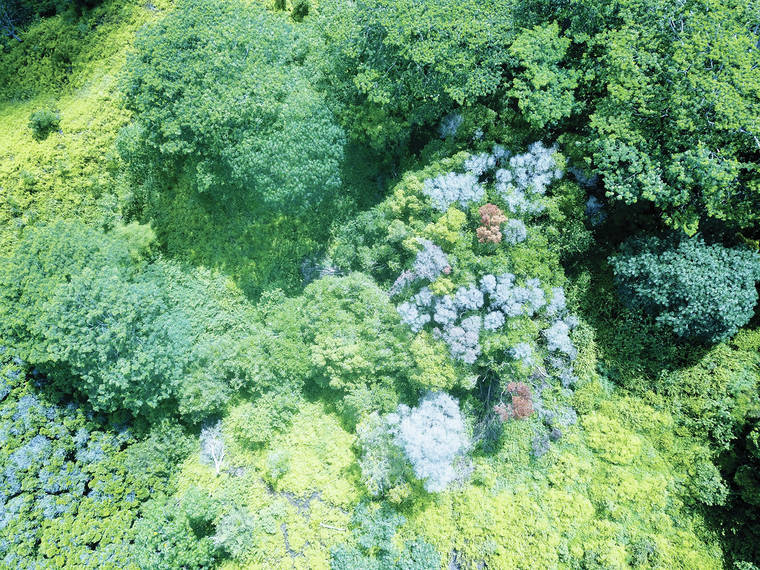HONOLULU— Researchers at the University of Hawai‘i Pacific Cooperative Studies Unit (PCSU) have collaborated with multiple agencies to develop a management tracking system to keep crucial data organized as the Rapid ‘Ohi‘a Death (ROD) fungus continues to spread to parts of Kaua‘i. The system allows field staff to compile data from multiple sources into one place, facilitate planning of management and research activities, and provide progress updates.
HONOLULU— Researchers at the University of Hawai‘i Pacific Cooperative Studies Unit (PCSU) have collaborated with multiple agencies to develop a management tracking system to keep crucial data organized as the Rapid ‘Ohi‘a Death (ROD) fungus continues to spread to parts of Kaua‘i. The system allows field staff to compile data from multiple sources into one place, facilitate planning of management and research activities, and provide progress updates.
“Supporting the work on Kaua‘i is one of my highest priorities,” said Brian Tucker, PCSU ROD data manager, who supports all aspects of statewide management planning, field implementation and reporting. “Electronic data collection in the field and geospatial data management enable field staff on Kaua‘i to track outbreaks and new discoveries of ROD.”
The compiled data begins with suspect ROD trees, or trees that have recently died and exhibit ROD symptoms. Data is mostly compiled through aerial surveys via helicopter or drone, but also includes ground reporting by landowners.
Suspect ROD trees are then entered into the database, where they are prioritized based upon multiple criteria of location and accessibility. These suspects then may be visited for sampling and other research activities.
Observations are made and entered into the database during visits and re-visits. The tracking system allows multiple agencies to know what has been completed, and when. Over time, the data will show how the disease has grown and spread. To date, there have been a total of 181 confirmed ROD cases on Kaua‘i, which includes 101 Ceratocystis lukuohia, the more aggressive and devastating species. There have been 78 Ceratocystis huliohia fungus infected species. Two of the confirmed cases were co-infected with both species.
Mitigation efforts
Monitoring of forests began prior to ROD being discovered on Kaua‘i when the first samples of dead ‘ohi‘a were collected in February 2016. While ROD was not detected, the Hawai‘i Department of Land and Natural Resources Division of Forestry and Wildlife began doing aerial surveys to locate ROD suspects in June 2016. Mitigation efforts began immediately after ROD was first discovered on Kaua‘i in May 2018.

Subscribe today for unlimited access.
Already a subscriber?
Login
Not ready to subscribe?
Register for limited access.
If you have a print subscription but require digital access,
activate your account.


